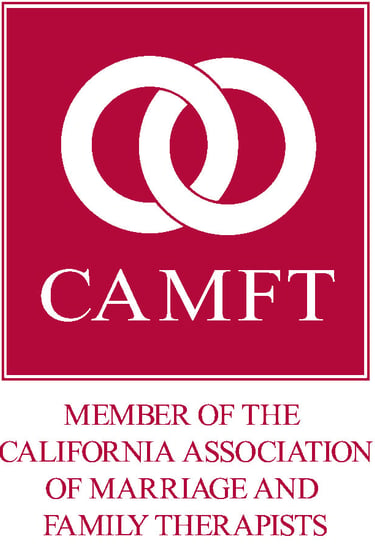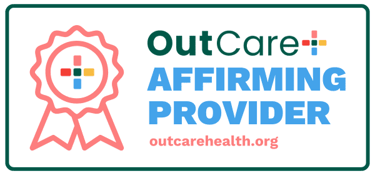Transforming Conflict into Connection: The Power of Nonviolent Communication:
When conflict arises, it’s often unmet needs— not bad intentions— driving the tension. The Nonviolent Communication model offers a way to speak honestly while staying connected to ourselves and others
COUPLE THERAPYBOOK RECOMMENDATION


What Is Nonviolent Communication?
Many of us long for connection, but in moments of conflict, our words can create distance instead. Misunderstandings, criticism, and defensiveness can take the place of real understanding. Nonviolent Communication (NVC), developed by psychologist Marshall Rosenberg, offers a different way forward. It teaches us how to express ourselves with honesty while remaining deeply attuned to the emotions and needs of others.
For those seeking in-person therapy in San Francisco, learning NVC can be a profound step toward improving relationships, strengthening emotional resilience, and developing self-acceptance.
At the Heart of NVC: Emotional Needs and Unmet Needs
Rosenberg’s approach is based on the idea that every human emotion is linked to met or unmet needs. When our needs are fulfilled, we experience emotions like joy, peace, and connection. When they are unmet, we may feel frustration, sadness, or anger. Rather than seeing emotions as problems to suppress or fix, NVC encourages us to recognize them as signals pointing toward our deeper needs.
For example:
Loneliness may indicate a need for companionship or belonging.
Frustration might signal a need for autonomy or understanding.
Anxiety could stem from a need for security or clarity.
Recognizing these underlying needs allows us to move beyond surface-level conflict and express what truly matters to us. It also helps us understand others with greater empathy, transforming conversations from arguments into opportunities for deeper connection.
The Four Components of Nonviolent Communication
NVC provides a framework for expressing our feelings and needs without blame or criticism. The four key components are:
Observations (What Happened?)
Describe the situation objectively, without evaluation or blame.
Example: “When I saw that you didn’t respond to my message…”
Feelings (How Do I Feel About It?)
Identify and express emotions without making the other person responsible for them.
Example: “…I felt hurt and disconnected.”
Needs (What Do I Need?)
Uncover the unmet need that is causing your feelings.
Example: “…because I need reassurance and communication in our friendship.”
Requests (What Would I Like?)
Make a clear, actionable request to help meet your need.
Example: “Would you be open to checking in with me when you’re busy?”
By shifting the focus from blame to understanding, NVC allows us to speak in a way that invites connection rather than defensiveness.
How Nonviolent Communication Can Improve Mental Health
For those seeking therapy in San Francisco, communication struggles often contribute to anxiety, loneliness, and relationship difficulties. NVC offers concrete tools for emotional well-being by helping individuals:
1. Reduce Self-Judgment
Many people engage in harsh self-criticism, believing they are “not enough” or “too much.” NVC encourages self-empathy, allowing us to recognize our own unmet needs rather than attacking ourselves for feeling the way we do.
2. Strengthen Relationships
Whether in romantic relationships, friendships, or workplace interactions, NVC fosters mutual understanding and compassion. By focusing on needs rather than blame, conflicts become opportunities for deeper connection rather than battlegrounds.
3. Transform Conflict Into Connection
Instead of reacting defensively, NVC teaches us to pause and ask, What is this person needing right now? This shift in perspective can turn arguments into meaningful dialogue, even in challenging situations.
Applying Nonviolent Communication in Therapy
Therapists in San Francisco often integrate NVC into counseling for anxiety, social phobia, and relationship challenges. Some ways therapy can support NVC practice include:
Identifying Emotional Triggers: Recognizing the unmet needs behind emotional reactions.
Building Emotional Awareness: Learning to name and validate feelings with compassion.
Practicing Healthy Self-Expression: Developing confidence in voicing needs without guilt or fear.
Finding a Therapist in San Francisco to Support Healthy Communication
If you’re looking for a therapist in San Francisco to help with relationship challenges, self-acceptance, or communication struggles, learning Nonviolent Communication can be a transformative step.
By practicing NVC, we begin to see conflict not as something to fear, but as a doorway to greater self-awareness, stronger relationships, and a more compassionate way of being.
Want to Learn More?
Interested in in-person therapy in San Francisco to improve communication and emotional well-being? Schedule a consultation today and explore how therapy can help you foster deeper connections.





